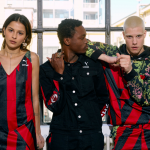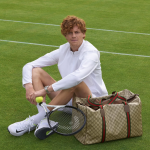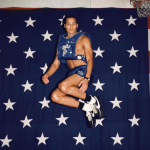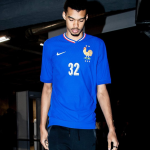
Milan's attempts to enter into the fashion world
From Koché to Nemen, the Rossoneri are trying to make up for lost ground but don't always get it right

April 8th, 2022
Milan has always been talked about as the capital of fashion, but also as one of the capitals of football. What if these two aspects were combined? The result of this union has largely already been demonstrated in recent years by Inter and Milan, with the clubs collaborating with many brands, both streetwear and high fashion. But there are two different rhythms. On the one hand there is Inter, which has abandoned Boss for Moncler and continues to sign important agreements, for example with the capsules with Kartell and Cinelli; on the other hand there is Milan, which despite being able to boast a fashion show on the Parisian catwalks with Koché, is unable to build a real strategy that can build a successful brand image in the world of fashion.
The positioning of the Rossoneri on the fashion scene has been at a standstill for years since Pato and Ronaldinho wore Dolce&Gabbana. Milan, in fact, has not been able to match its name to that of a high fashion brand, a problem especially in relation to the fact that the bitter enemies of Inter, have a portfolio of collaborations off the pitch and especially on the fashion side very important. Milan is trying, it is moving, it is dynamic and growing, but it is at too low a level to be able to say that it has united sports results and brand image.
The Rossoneri have been sponsored for four years by Puma, which has replaced adidas as a technical partner and which in the last two years has included the Rossoneri in various on the pitch projects (such as fourth shirts and various special kits). As far as formalwear is concerned, after the departure of Dolce&Gabbana, first the Milanese Boglioli and then, in the last two years, the Campania-based Harmont&Blaine have followed. But it is in the last two years that Milan has made important agreements, vertical and specific to the world of fashion. First with Paper Planes, a brand owned by Roc Nations, which manages part of the communication of the rossoneri's image abroad, with the launch of a capsule with the usual streetwear items - snapbacks, sweatshirts, cargo pants, sneakers.
Then came the capsules with Etro, officially the Rossoneri's travelwear partner, and finally, this year, two important fashion collaborations, Koché and Nemen. Not that this was a completely unknown universe, given that during the Berlusconi period, from 2004 to 2016, Dolce&Gabbana dressed the Milan players with a calendar and a personalized shoot. A sartorial elegance characterized for years by the Martini suit of the maison and then by the Sicily fit, another elaboration of the Italian brand.
With Nemen, a young Italian brand, Milan launched the off the pitch collection last week that accompanied the launch of the fourth kit on the field. While the highest point the rossoneri reached with Koché, entering directly into haute couture as few other clubs have managed. The French fashion house, during the last fashion week in Paris, has brought on the catwalk the brand and the colors of AC Milan, in a project that has sanctioned a historic point in the relationship between soccer and fashion.
Not so much for the blazon of the protagonists - for that it would be enough to mention Paris Saint-Germain, which last season collaborated off the pitch with the same French brand - but for the fact that Milan went on a real catwalk. Commenting on the deal, AC Milan's Chief Revenue Officer Casper Stylsvig said: "It is a testament to the versatility of the AC Milan brand and its ability to move at ease even in sectors other than soccer, and to have its own voice in areas such as fashion and lifestyle".
In spite of this, AC Milan continues not to find its own identity when it comes to choosing its partners on the fashion side, showing a certain basic approximation. Nemen, the last brand he worked with, is very young, while Boglioli or Harmont&Blaine, despite being very well known in the sector, cannot be compared to noble companies such as Dior or Moncler. And the collection with Koché, despite the prestige of the brand, has not been positioned in such a way as to obtain the right feedback at a media level, remaining limited to insiders. Instead, the reason that is increasingly driving both brands and soccer teams to collaborate, both on and off the pitch, is precisely to unhinge their respective aesthetics by trying to establish points of contact that present a strong contamination.
It is clear that the evolution of the Milan world in this two-year period, despite the missteps, has been strong in all sectors, from the field to communication to lifestyle. With seven days to go before the end of the season, it is almost mathematical for the team to reconfirm its place in the Champions League for next year, but the question of the title is still uncertain. Obviously, it is useless to underline when a hypothetical victory in the championship would contribute to increase Milan's appeal in terms of attractiveness to sponsors, surpassing the 27 new commercial partnerships - the last one with Konami for the traning kit - signed this season and maybe bring some maison to sign the formalwear of the rossoneri.












